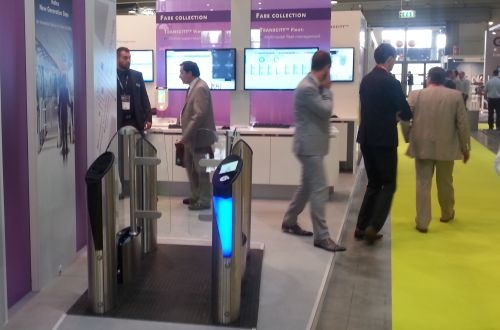TransCity is designed to enable operators to accept a wide range of payment methods from traditional tickets and contactless travel cards to contactless bank cards or mobile phones using near-field communication (NFC). The technology will enable operators to change from ticket and smart card-based fare collection where a large amount of data is loaded onto the card, to payment by bank cards or mobile phones which are account based where the transaction is processed by the back-office system. The advantage of these new payment methods is that passengers no longer need to have tickets or the operator's own smartcard, while operators can amend fares more easily as data does not have be to downloaded to a smartcard.
TransCity comprises five elements:
- fare management which includes a fare engine,
- card management using host card emulation which allows the passenger to see a record of their transactions
- customer management to enable operators to get to know their passengers
- business analytics, and
- traffic management.
Thales has three launch customers for TransCity. Bordeaux Urban Community (CUB) awarded Thales a 10-year contract in December 2014 to install a new multi-media fare collection system by 2017 covering its light rail, bus and ferry network, and this will include the passenger monitoring element of TransCity. Thales will launch a pilot project with Rotterdam Electric Tram (RET) as it wants to switch to contactless bank card payment, and it is preferred bidder to provide a new ticketing system for Gautrain in South Africa which also wants to make the switch.
Thales also displayed a new ticket gate at UITP which uses an overhead camera to identify the presence of passengers rather than the traditional method using infra-red sensors inside the gate. This makes it possible to have narrower gates which are cheaper to produce and occupy less space.

